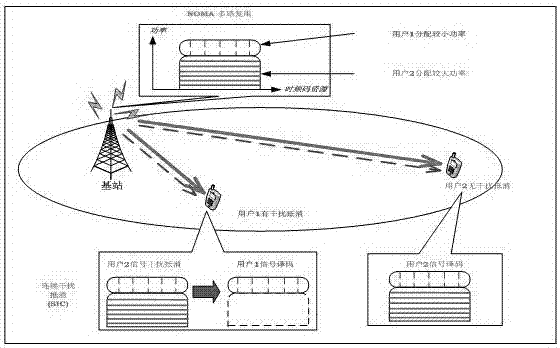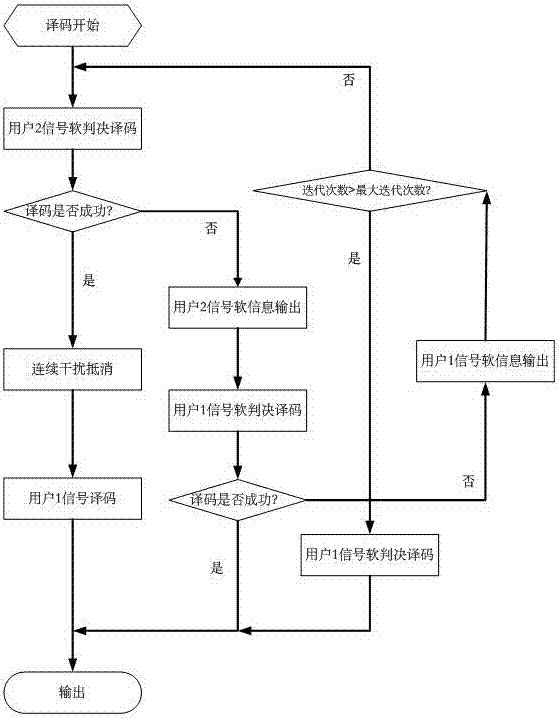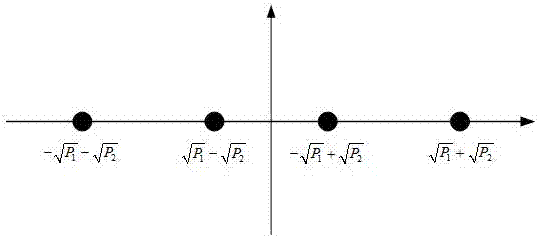Non-orthogonal multiple access decoding method for power domain
A non-orthogonal multiple access, power domain technology, applied in the field of wireless communication coding and decoding, can solve problems such as increasing the probability of user 1 signal decoding failure, SIC technology error propagation, etc., to achieve the effect of good decoding performance
- Summary
- Abstract
- Description
- Claims
- Application Information
AI Technical Summary
Problems solved by technology
Method used
Image
Examples
Embodiment Construction
[0020] The present invention will be further described below in conjunction with the accompanying drawings and embodiments.
[0021] A power domain non-orthogonal multiple access decoding method, the implementation steps are as follows:
[0022] Step 1. The base station performs channel coding (for example, low-density parity-check code, Turbo code, polar code, etc.) and modulation on the signals sent to user 1 and user 2 to obtain transmission information symbols and . Determine the transmit power allocated to user 1 and user 2 at the base station and . The base station uses superposition modulation to send signals to user1 and user2.
[0023] Step 2: User 1 receives the signal . Among them, the path gain from base station to user 1 is h 1 , Indicates that the noise power is background Gaussian white noise. User 1 first decodes the information symbol of user 2 , in the traditional method, the signal of user 1 is treated as Gaussian white noise at this ti...
PUM
 Login to View More
Login to View More Abstract
Description
Claims
Application Information
 Login to View More
Login to View More - R&D
- Intellectual Property
- Life Sciences
- Materials
- Tech Scout
- Unparalleled Data Quality
- Higher Quality Content
- 60% Fewer Hallucinations
Browse by: Latest US Patents, China's latest patents, Technical Efficacy Thesaurus, Application Domain, Technology Topic, Popular Technical Reports.
© 2025 PatSnap. All rights reserved.Legal|Privacy policy|Modern Slavery Act Transparency Statement|Sitemap|About US| Contact US: help@patsnap.com



